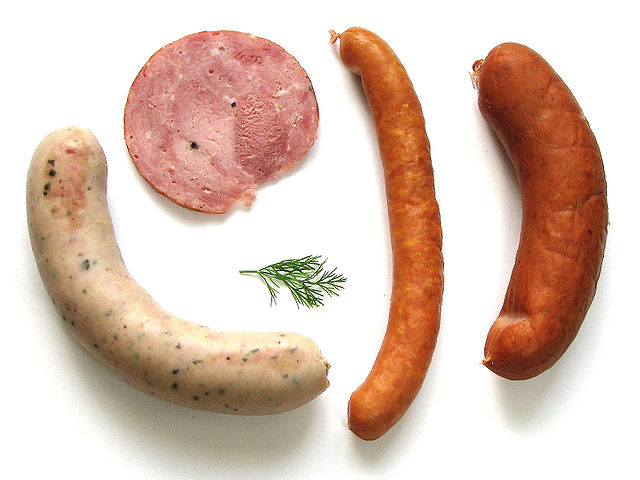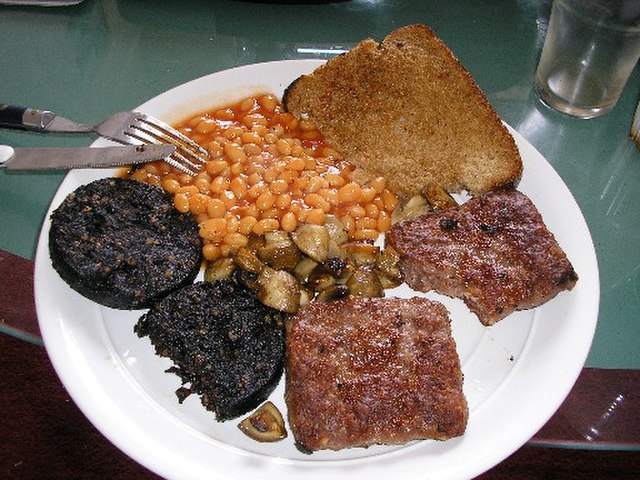Sausage casing, also known as sausage skin or simply casing, is the material that encloses the filling of a sausage. Natural casings are made from animal intestines or skin; artificial casings, introduced in the early 20th century, are made of collagen and cellulose. The material is then shaped via a continuous extrusion process – producing a single sausage casing of indefinite length – which is then cut into desired lengths, usually while the extrusion process continues.
Casing from beef (in bucket) and sheep (on rear edge of bucket)
Sausage casings
Hog casings, packed in salt, from a vacuum pack
A salami and the collagen casing (below) it came in
A sausage is a type of meat product usually made from ground meat—often pork, beef, or poultry—along with salt, spices and other flavourings. Other ingredients, such as grains or breadcrumbs, may be included as fillers or extenders.
Kiełbasa biała (white sausage), szynkowa (smoked), śląska and podhalańska styles (Poland)
A plate of bratwurst, sauerkraut and mashed potatoes, typical of German cuisine
Csabai kolbászok (Hungarian csabai sausages)
Full Scottish breakfast: black pudding, Lorne sausage, toast, fried mushrooms and baked beans








